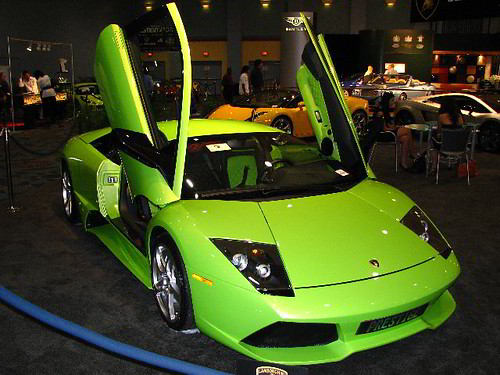|
|
|---|
Tuesday, September 1, 2009
REE market. Beyond Lithium: What the Rare Earth Squeeze Means for Hybrid Cars TNR.v, CZX.v, SQM, ROC, FMC, AVL.to, RES.v, WLC.v, RM.v, CLQ.v, LI.v, F,
Posted by andre at 1:30 PM"There are resources and there are people who are working on Energy security of the future - secured supply of Lithium and REE. Recent boom in Junior market related stocks confirms our observations."
"With Lithium and REE previous work was funded directly or via Majors by governments in the rush of a cold war and then properties were mostly abandoned once military needs were satisfied. Extensive data and even core from previous drilling programmes could be available on sites and it is as valuable in exploration as properties itself. REE market in the West was killed by China's pricing of hard rock mining and they have consolidated market after that. Now with Electric Cars and Green Mobility Revolution at our doorsteps Lithium and REE is a strategic commodity, when every government would like to have a certainty of supply and not to trade Oil dependence for Battery dependence."
"By Josie Garthwaite - Earth2Tech
Wean vehicles off of one limited resource — petroleum — and get them hooked on another: lithium. That’s what some critics have raised about switching over to electric cars that use lithium-ion batteries, since the U.S. imports most of its lithium from Chile and Argentina, while Bolivia has enough deposits to become a major lithium provider. But amid all the hubbub about the looming lithium squeeze, another resource trend is taking shape that has the potential to drive some big changes in advanced battery and vehicle technology: a group of metals known as rare earth elements, or REE.
According to Lux Research analyst Jacob Grose, “Rare earths are used very much in nickel metal hydride batteries,” like the Toyota Prius and Honda Insight. “Even though…hybrids use only a fraction of the worldwide output of these metals, if there is a shortage and prices rise, it will definitely lead to cost increases in today’s hybrids.”
REE, used in fiber-optic telecom cables, military gear, computers and other technologies, aren’t actually as uncommon as the name implies. Some of them are about as abundant as industrial metals like nickel, copper, zinc and lead. For comparison, the two least abundant REE (thulium and lutetium) are almost 200 times more common than gold. But the problem is it’s rare for these metals to become concentrated in deposits that are easy to tap, and as a result, most of the world’s supply comes from just a few sites.
The U.S. has some of the largest known deposits of REE (pdf download), but since the 1990s it’s been importing most of its REE from China, according to the U.S. Geological Survey. That’s partly because Chinese companies came online and ramped up production, helping to drive down prices to a point where U.S. companies have found it difficult to compete. Years ago the primary domestic supplier of REE, Colorado-based Molycorp, encountered several wastewater leaks (spilling radioactive waste into a nearby lake), its mining permit expired and it stopped mining.
But the market for REEs is set to explode over the next few years. Reuters reported that demand for these metals is on track to exceed supply by some 40,000 metric tons per year within the next “several years” unless new production comes online. Molycorp is reportedly hoping to do just that, with plans to reopen its mine in California’s San Bernadino County in 2012 with new environmental safeguards. At the same time, however, China is considering limits on REE exports — something that Grose said “is indeed a concern for the hybrid vehicle industry.”
An REE squeeze, brought on through politics or simple resource depletion, could have repercussions — and drive innovation — beyond hybrid vehicles. Even cars made with lithium-ion batteries (the technology of choice for the upcoming generation of all-electric cars) often have an REE called neodymium in the magnets used to make their electric motors. According to Grose, “If the price of neodymium skyrockets, automakers might go to less common types of motors” that don’t require these magnets or the rare metals, such as wound-rotor motors.
So similar to the way in which battery makers whose technologies use less lithium could enjoy an advantage if lithium prices jump, and the way thin-film solar became the hot new thing when polysilicon shortages shook the photovoltaic industry last year, innovators working around commodities like neodymium could find a window of opportunity in an REE crunch."
Wean vehicles off of one limited resource — petroleum — and get them hooked on another: lithium. That’s what some critics have raised about switching over to electric cars that use lithium-ion batteries, since the U.S. imports most of its lithium from Chile and Argentina, while Bolivia has enough deposits to become a major lithium provider. But amid all the hubbub about the looming lithium squeeze, another resource trend is taking shape that has the potential to drive some big changes in advanced battery and vehicle technology: a group of metals known as rare earth elements, or REE.
According to Lux Research analyst Jacob Grose, “Rare earths are used very much in nickel metal hydride batteries,” like the Toyota Prius and Honda Insight. “Even though…hybrids use only a fraction of the worldwide output of these metals, if there is a shortage and prices rise, it will definitely lead to cost increases in today’s hybrids.”
REE, used in fiber-optic telecom cables, military gear, computers and other technologies, aren’t actually as uncommon as the name implies. Some of them are about as abundant as industrial metals like nickel, copper, zinc and lead. For comparison, the two least abundant REE (thulium and lutetium) are almost 200 times more common than gold. But the problem is it’s rare for these metals to become concentrated in deposits that are easy to tap, and as a result, most of the world’s supply comes from just a few sites.
The U.S. has some of the largest known deposits of REE (pdf download), but since the 1990s it’s been importing most of its REE from China, according to the U.S. Geological Survey. That’s partly because Chinese companies came online and ramped up production, helping to drive down prices to a point where U.S. companies have found it difficult to compete. Years ago the primary domestic supplier of REE, Colorado-based Molycorp, encountered several wastewater leaks (spilling radioactive waste into a nearby lake), its mining permit expired and it stopped mining.
But the market for REEs is set to explode over the next few years. Reuters reported that demand for these metals is on track to exceed supply by some 40,000 metric tons per year within the next “several years” unless new production comes online. Molycorp is reportedly hoping to do just that, with plans to reopen its mine in California’s San Bernadino County in 2012 with new environmental safeguards. At the same time, however, China is considering limits on REE exports — something that Grose said “is indeed a concern for the hybrid vehicle industry.”
An REE squeeze, brought on through politics or simple resource depletion, could have repercussions — and drive innovation — beyond hybrid vehicles. Even cars made with lithium-ion batteries (the technology of choice for the upcoming generation of all-electric cars) often have an REE called neodymium in the magnets used to make their electric motors. According to Grose, “If the price of neodymium skyrockets, automakers might go to less common types of motors” that don’t require these magnets or the rare metals, such as wound-rotor motors.
So similar to the way in which battery makers whose technologies use less lithium could enjoy an advantage if lithium prices jump, and the way thin-film solar became the hot new thing when polysilicon shortages shook the photovoltaic industry last year, innovators working around commodities like neodymium could find a window of opportunity in an REE crunch."
Subscribe to:
Post Comments (Atom)
















0 comments:
Post a Comment